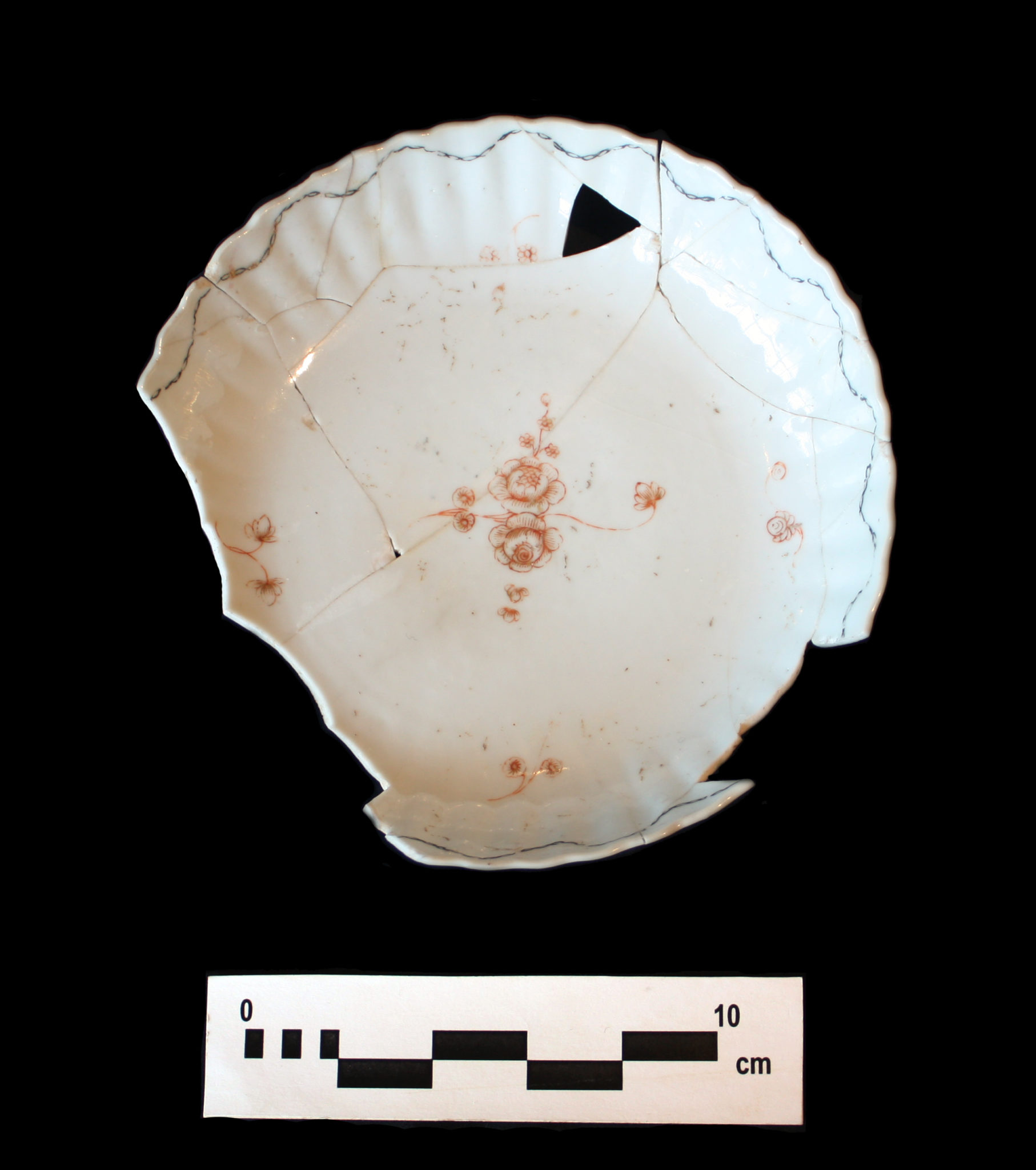Manufacture date: post 1690
Common vessels: Teawares, serving ware

In the Ontario archaeological timeline, Chinese porcelain is associated with some of our earliest Euro-Canadian sites dating to the late 18th and early 19th centuries. Exporting porcelain was a huge industry in China with a long rich history, but by the time Chinese porcelain was making its way to Ontario, production was in decline. By the end of the 18th century, porcelain had become less expensive to make in Europe than in China, and transfer printing was making these formerly hand painted vessels cheaper to produce, marking the end of the Chinese domination of the porcelain market.
This ceramic has an extremely dense, white body and features a hard, glossy glaze with a bluish tint. Although hand painted blue and white motifs are the most famous decorations found on Chinese porcelain, we also find vibrant polychrome enameled motifs and gilding.









